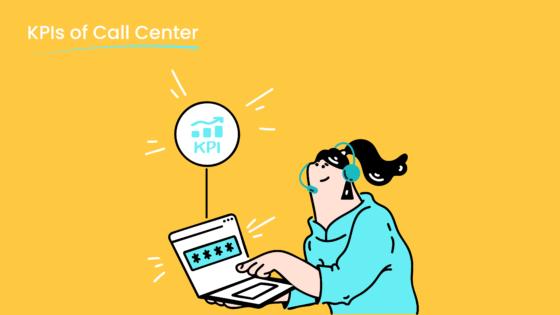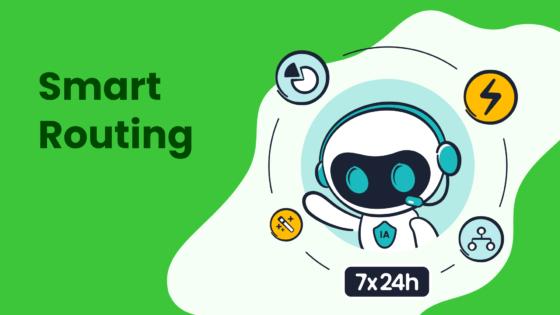How to Improve CSAT with a Step-by-Step Approach

Customer Satisfaction Score (CSAT) measures how satisfied customers feel after interacting with your business. It reflects the quality of your customer experience and helps you understand their needs better. Improving CSAT strengthens customer loyalty and drives business growth. Research shows that a 5% increase in customer retention can boost profits by 25% to 95%. Additionally, 96% of customers who face high effort report disloyalty, highlighting the importance of reducing effort to achieve a good CSAT score. By refining service features to match customer expectations, you can build lasting relationships and elevate satisfaction levels. Sobot’s tools empower you to improve CSAT and make this transformation.
Understanding CSAT and Its Importance

What is CSAT?
CSAT, short for Customer Satisfaction Score, is a key metric that measures how satisfied your customers are with a product, service, or interaction. It provides valuable insights into the quality of your customer experience. Typically, businesses measure CSAT through surveys where customers rate their experience on a scale of 1 to 5. A higher score indicates greater satisfaction and a stronger likelihood of repeat business.
| Aspect | Details |
|---|---|
| Definition | A metric used to measure customer satisfaction with a product or service. |
| Measurement Method | Survey asking customers to rate their experience on a scale of 1 to 5. |
| Importance | Ranked second (39%) in measuring digital CX improvement according to a 2021 CMSWire survey. |
Understanding CSAT helps you identify areas for improvement and refine your services to meet customer expectations. By focusing on this metric, you can improve CSAT and create a more positive customer experience.
Why Customer Satisfaction Matters for Business Success
Customer satisfaction plays a vital role in driving business success. Satisfied customers are more likely to return, spend more, and recommend your business to others. Studies show that existing customers spend 31% more than new ones and are 50% more likely to try new products. Retaining customers is also 82% cheaper than acquiring new ones. Even a 5% improvement in retention can boost profits by 25%.
| Evidence Description | Statistic |
|---|---|
| Existing customers spend more | 31% more than new customers |
| Likelihood to try new products | 50% more likely than new customers |
| Cost of retaining customers | 82% cheaper than acquiring new ones |
| Profit increase from retention | 25% increase in profits from a 5% retention improvement |
| Repeat purchase rate | 3 to 10 times higher for 'totally satisfied' customers |
By prioritizing customer satisfaction, you not only increase revenue but also build a loyal customer base that supports long-term growth.
The Role of CSAT in Enhancing Customer Loyalty
CSAT directly impacts customer loyalty. A high CSAT score often leads to repeat business and referrals. Satisfied customers trust your brand and are more likely to recommend it to others. In fact, 92% of consumers globally trust word-of-mouth recommendations over traditional ads. Additionally, improving CSAT reduces churn rates, helping you retain more customers and increase their lifetime value.
| CSAT Score Change | Revenue Increase |
|---|---|
| 4 to 4.9 | 4% |
When you focus on linking CSAT to retention, you streamline operations and reduce the need for service recovery. This not only enhances customer loyalty but also improves efficiency, allowing your business to grow sustainably.
Measuring CSAT Effectively
How to Measure Customer Satisfaction with CSAT Surveys
Measuring CSAT begins with well-designed surveys that capture your customers' experiences. A thoughtfully crafted survey not only ensures accurate results but also encourages higher response rates. To measure customer satisfaction effectively, follow these proven methodologies:
- Ask for an Overall Company Rating First: Start with a simple question like, "How satisfied are you with your experience?" This provides a quick snapshot of customer satisfaction.
- Ask for Detailed Attribute Ratings: Dive deeper by asking about specific aspects, such as product quality or support responsiveness.
- Allow for Open-Text Feedback: Give customers space to share their thoughts in their own words. This can uncover insights that numbers alone cannot.
- Choose the Right Survey Tool: Use tools that are easy to navigate and accessible across devices.
- Ask Short and Relevant Questions: Keep your surveys concise to respect your customers' time.
- Send Surveys at the Right Time: Timing matters. For example, send a survey immediately after a support interaction for more accurate feedback.
- Thank Customers for Their Feedback: A simple "thank you" fosters goodwill and encourages future participation.

Sobot’s Voice/Call Center simplifies survey distribution by integrating feedback collection into your customer interactions. With features like call tracking and real-time monitoring, you can gather actionable insights effortlessly.
CSAT Calculation Methods and Formula
Once you collect survey responses, calculating your CSAT score is straightforward. Use this formula:
CSAT (%) = (Number of satisfied customers [ratings of 4 and 5] / Total number of survey responses) × 100
This method is widely recognized for its reliability. It focuses on the percentage of satisfied customers, making it easy to benchmark your results against industry standards. For example, if 80 out of 100 respondents rate their experience as 4 or 5, your CSAT score would be 80%.
Benchmarking your CSAT score helps you understand how your business compares to competitors in your industry. It also aids in setting CSAT goals that align with your growth objectives. Tools like Sobot’s analytics dashboard can automate this process, providing real-time updates and historical trends to help you track progress.
Tools for Measuring CSAT, Including Sobot's Voice/Call Center

The right tools make measuring CSAT more efficient and accurate. Sobot’s Voice/Call Center offers a comprehensive solution for gathering and analyzing customer satisfaction metrics. Here’s how it helps:
- Intelligent IVR: Customize greetings and route calls to the right agents, ensuring a seamless experience for your customers.
- Unified Workspace: Access all customer data in one place, making it easier to personalize interactions and measure customer satisfaction.
- Real-Time Monitoring: Track call performance and customer feedback as it happens.
- AI-Powered Voicebot: Automate repetitive tasks and focus on meaningful conversations that impact CSAT.
For example, Samsung used Sobot’s solutions to unify its communication channels and improve agent efficiency by 30%. This contributed to a 97% customer satisfaction rate. By leveraging tools like Sobot’s Voice/Call Center, you can measure customer satisfaction across multiple touchpoints and make data-driven decisions to enhance your service.
Analyzing Customer Feedback for CSAT Insights
Interpreting CSAT Data to Identify Trends
Analyzing customer feedback begins with identifying patterns in your CSAT data. This process helps you uncover what drives satisfaction or dissatisfaction. Statistical techniques like predictive analytics allow you to forecast future satisfaction levels based on past data. Regression analysis reveals how specific factors, such as response time or product quality, influence CSAT scores. Machine learning automates this process, identifying hidden patterns and trends that might otherwise go unnoticed.
For example, if your data shows a consistent drop in satisfaction after long wait times, you can prioritize reducing response times. By interpreting these trends, you gain actionable insights that guide your decision-making. This approach ensures you listen and act on customer feedback effectively, improving both satisfaction and loyalty.
Using Analytics Tools for Deeper Insights
Advanced analytics tools simplify the process of analyzing customer feedback. These tools use techniques like predictive modeling and AI to extract actionable insights from complex datasets. For instance, predictive modeling can help you anticipate customer needs, while AI-driven analysis uncovers deeper trends in sentiment and preferences.
By employing these tools, you can collect meaningful feedback and transform it into strategies that enhance your offerings. Businesses that analyze and interpret customer feedback effectively often achieve better product-market fit. This leads to improved satisfaction and loyalty. Sobot’s analytics dashboard, integrated into its Voice/Call Center, provides real-time insights into customer interactions. It enables you to monitor trends and make data-driven decisions that elevate your CSAT scores.
Leveraging Sobot's Omnichannel Solution for Feedback Analysis
Sobot’s Omnichannel Solution offers a unified platform for collecting customer feedback across multiple channels. It uses AI-driven thematic clustering to identify underlying dissatisfaction signals. A feedback prioritization matrix ranks pain points by frequency and emotional intensity, helping you prioritize actionable insights. Additionally, the solution tracks evolving themes in open-ended responses, allowing you to adapt to shifting customer expectations.
For example, Samsung leveraged Sobot’s solutions to unify its communication channels and analyze feedback more effectively. This led to a 30% increase in agent efficiency and a 97% customer satisfaction rate. By using Sobot’s tools, you can listen and act on customer feedback seamlessly, ensuring your strategies align with customer needs.
Strategies to Improve CSAT

Enhancing Customer Support with Sobot's Voice/Call Center

Improving customer support is one of the most effective ways to enhance customer satisfaction. Sobot's Voice/Call Center offers a robust solution to streamline your support operations and deliver exceptional service. By integrating features like Intelligent IVR, Smart Call Routing, and AI-powered Voicebot, you can reduce response times and improve the overall customer experience.
For instance, businesses using Sobot's Voice/Call Center have reported a 35% reduction in waiting times, which directly contributes to higher satisfaction levels. The platform also ensures seamless communication by unifying customer data in a single workspace. This allows your agents to access relevant information instantly, enabling them to resolve issues faster and more effectively.
| Metric | Value |
|---|---|
| Percentage of business from upgrades | 70% |
| Reduction in waiting times | 35% |
| Benefit to clients | Major fresh food e-commerce companies |
To further improve CSAT, focus on these steps:
- Train your agents to use tools like Sobot's Voice/Call Center effectively.
- Monitor performance metrics regularly to identify areas for improvement.
- Provide quality assurance feedback to help agents refine their skills.
By implementing these strategies, you can improve customer satisfaction and build stronger relationships with your customers.
Personalizing Customer Interactions to Boost Satisfaction
Personalization plays a critical role in improving customer satisfaction. Customers appreciate when businesses remember their preferences, address them by name, and offer tailored solutions. Research shows that 82% of consumers say personalized experiences influence their purchasing decisions in at least half of all shopping situations.
| Evidence Type | Description |
|---|---|
| Personalization | Using the customer’s name, remembering previous interactions, and providing tailored recommendations can improve CSAT. |
| Communication Channels | Personalized communication channels like WhatsApp or social media enhance customer satisfaction. |
Sobot's Omnichannel Solution makes personalization effortless. It consolidates customer data from various channels, enabling your agents to provide consistent and customized support. For example, if a customer contacts you via WhatsApp, your agent can access their previous interactions and offer a solution that aligns with their history. This approach not only improves the customer experience but also boosts loyalty.
To implement customer satisfaction improvement strategies through personalization, follow these steps:
- Use tools like Sobot's Omnichannel Solution to centralize customer data.
- Train your agents to recognize and act on personalization opportunities.
- Maintain your brand voice across all touchpoints to ensure consistency.
Personalized interactions show your customers that you value them, which significantly enhances their satisfaction and loyalty.
Leveraging Automation and AI for Efficiency
Automation and AI are game-changers in customer support. They allow you to handle repetitive tasks efficiently, freeing up your agents to focus on more complex issues. Companies using AI-driven platforms report higher CSAT scores due to faster and more convenient service.
- Improve customer satisfaction: Fast and convenient service is critical to gaining loyal customers. AI agents or chatbots can deliver 24/7 support, decreasing hold times and increasing satisfaction.
- Provide self-service options: AI-powered tools like Sobot's Chatbot enable customers to resolve issues independently, which many prefer for simple queries.
Sobot's AI-powered Voicebot, for example, uses intelligent interaction and intent recognition to address customer needs quickly. This reduces average handle time and increases first-contact resolution rates. By leveraging automation, you can also reduce operational costs while maintaining high service quality.
| Evidence Type | Description |
|---|---|
| Higher CSAT Scores | Companies using AI-driven customer success platforms report improved satisfaction. |
To maximize the benefits of automation, follow these steps:
- Identify repetitive tasks that can be automated.
- Implement AI tools like Sobot's Voicebot to handle these tasks.
- Continuously monitor and refine your automation processes to ensure they meet customer expectations.
Automation not only improves efficiency but also enhances the customer experience, making it a vital strategy to improve CSAT.
Acting on Customer Feedback to Drive Improvements
Customer feedback is a goldmine of insights. Acting on it effectively can transform your business and significantly improve CSAT. When you listen to your customers, you uncover their pain points, preferences, and expectations. This information allows you to make targeted improvements that enhance their experience.
Steps to Act on Customer Feedback
-
Categorize Feedback
Organize feedback into actionable categories like product issues, service quality, or communication gaps. This helps you prioritize areas that need immediate attention. For example, if customers frequently mention long wait times, focus on optimizing response times. -
Analyze Trends
Look for recurring themes in the feedback. Use tools like Sobot’s analytics dashboard to identify patterns. For instance, if multiple customers mention difficulty navigating your website, consider redesigning it for better usability. -
Develop Action Plans
Create specific plans to address the issues identified. Assign responsibilities to your team and set measurable goals. For example, if feedback highlights poor call resolution rates, train agents to handle queries more efficiently using Sobot’s Voice/Call Center. -
Implement Changes
Roll out improvements based on your action plans. Use Sobot’s Omnichannel Solution to streamline communication and ensure consistency across all channels. This unified approach enhances customer satisfaction by providing seamless experiences. -
Monitor Results
Track the impact of your changes using CSAT surveys and analytics tools. Measure progress against your goals and refine strategies as needed. For example, if satisfaction scores improve after reducing wait times, continue optimizing other aspects of your service.
Real-World Example: Samsung’s Success Story
Samsung acted on customer feedback by implementing Sobot’s all-in-one contact center solution. The company unified its communication channels and improved data connectivity. This allowed agents to address customer concerns more effectively. As a result, Samsung achieved a 97% customer satisfaction rate and increased agent efficiency by 30%. This example demonstrates how acting on feedback can drive tangible improvements.
Tips for Success
Pro Tip: Always close the feedback loop. Inform customers about the changes you’ve made based on their input. This builds trust and shows them that their opinions matter.
By acting on customer feedback, you not only improve CSAT but also foster stronger relationships with your customers. Tools like Sobot’s solutions make this process seamless, enabling you to turn insights into impactful actions.
Best Practices for Sustaining High CSAT Scores
Continuous Monitoring of Customer Satisfaction
To sustain high customer satisfaction, you must continuously monitor and evaluate your performance. Regularly tracking customer satisfaction helps you identify trends and address issues before they escalate. Start by setting specific goals for improvement, such as bi-monthly or quarterly targets. Use tools like Sobot’s analytics dashboard to measure CSAT scores and analyze feedback systematically.
| Practice | Description |
|---|---|
| Regular Measurement | Continuously assess CSAT scores to track changes over time. |
| Feedback Analysis | Review customer feedback to uncover areas for improvement. |
| Implementation of Improvements | Act on insights gained from feedback to enhance satisfaction. |
Additionally, consider adjusting your survey distribution methods. For example, in-app surveys may work better for tech-savvy customers, while email surveys might suit others. Conducting user interviews can also provide deeper insights into your strengths and weaknesses. By analyzing customer service feedback reports, you can make informed decisions to improve the customer experience.
Pro Tip: Set aside time each month to review your CSAT data and refine your strategies.
Adapting Strategies Based on Feedback Trends
Adapting your strategies based on feedback trends ensures your business stays aligned with customer expectations. Begin by analyzing data to identify patterns. For instance, if customers frequently mention slow response times, prioritize reducing wait times. Use market research and social media monitoring to stay updated on emerging trends and consumer preferences.
| Strategy | Description |
|---|---|
| Continuous Monitoring | Observe market trends to remain competitive. |
| Conduct Market Research | Gather data through surveys and interviews to understand preferences. |
| Analyze Data | Identify patterns to inform strategic decisions. |
| Stay Updated with Industry News | Keep informed about developments to adapt to changes. |
| Monitor Social Media | Gain insights into consumer sentiment and trends. |
| Engage with Customers | Interact directly to understand their needs and expectations. |
Direct engagement with customers provides real-time insights. For example, asking follow-up questions during support interactions can reveal valuable feedback. By staying proactive, you can refine your strategies and maintain a competitive edge.
Training Teams for Better Customer Engagement
Your team plays a critical role in sustaining high CSAT scores. Well-trained agents can handle customer interactions more effectively, leading to better outcomes. Implement training programs that focus on emotional intelligence, scenario simulations, and continuous feedback.
| Training Methodology | Improvement in CSAT Scores | Description |
|---|---|---|
| Blended Learning Programs | 75% to 90% in six months | Combines various learning methods for effective training. |
| Emotional Intelligence Training | N/A | Enhances interpersonal skills and empathy for better customer interactions. |
| Scenario Simulations | N/A | Prepares agents for real-world challenges through role-playing. |
Cross-training agents for multiple roles increases flexibility and efficiency. For example, teaching agents to handle both voice and chat support ensures seamless service during peak times. Regular coaching sessions also help agents refine their skills. By investing in your team, you create a customer-centric culture that drives satisfaction.
Note: Track customer satisfaction after training sessions to measure their impact and identify areas for further improvement.
Leveraging Sobot's Unified Workspace for Seamless Operations

Managing customer interactions across multiple channels can feel overwhelming. Sobot's Unified Workspace simplifies this process by consolidating all communication into a single platform. This workspace allows you to access customer data, track interactions, and manage tasks efficiently. It eliminates the need to switch between systems, saving time and reducing errors.
The Unified Workspace integrates with tools like CRM systems and ticketing platforms. This ensures that your team has all the information they need to resolve issues quickly. For example, if a customer contacts you via email and later follows up through live chat, your agents can view the entire conversation history in one place. This continuity improves the customer experience and boosts satisfaction.
Sobot’s Unified Workspace also includes real-time monitoring and analytics. You can track key metrics like response times and resolution rates. These insights help you identify areas for improvement and optimize your operations. Businesses using this solution have reported a 30% increase in productivity and faster resolution times.
Pro Tip: Use Sobot’s Unified Workspace to personalize interactions. Accessing detailed customer profiles allows you to tailor responses and build stronger relationships.
The platform’s AI-driven features further enhance efficiency. Automated workflows handle repetitive tasks, freeing your team to focus on complex issues. For instance, Sobot’s AI-powered Voicebot can route calls intelligently, ensuring customers reach the right agent without delays.
By leveraging Sobot’s Unified Workspace, you streamline operations and deliver consistent, high-quality service. This not only improves satisfaction but also strengthens customer loyalty.
Measuring and improving customer satisfaction is essential for building a loyal customer base and driving business success. Satisfied customers are more likely to return, recommend your brand, and spend more over time. For instance:
| Statistic | Description |
|---|---|
| 70% | Customers who rate their experience as 'good' are 70% more likely to return. |
| 5x | Satisfied customers are five times more likely to recommend a brand. |
| 25% | A 25% increase in customer satisfaction can lead to a 10% increase in revenue. |
Enhancing customer satisfaction creates a positive cycle where happy customers boost your brand reputation and revenue. By adopting tools like Sobot’s solutions, you can streamline operations, personalize interactions, and act on feedback effectively. These steps ensure your business stays ahead in delivering exceptional experiences.
FAQ
What is the best way to collect customer feedback for CSAT improvement?
Use surveys immediately after interactions to capture fresh feedback. Keep questions short and relevant. Tools like Sobot’s Voice/Call Center simplify this process by integrating feedback collection into customer interactions, ensuring you gather actionable insights efficiently.
How often should you measure CSAT?
Measure CSAT regularly to track trends and identify areas for improvement. Monthly or quarterly surveys work well for most businesses. However, for high-touch industries, consider measuring after every significant customer interaction to maintain satisfaction.
Can automation improve CSAT?
Yes, automation enhances efficiency and reduces response times. Tools like Sobot’s AI-powered Voicebot handle repetitive tasks, allowing agents to focus on complex issues. This improves the overall experience and satisfaction for your customers.
How does personalization impact CSAT?
Personalization builds stronger connections with customers. Tailored interactions, such as addressing them by name or remembering past preferences, show you value them. Sobot’s Omnichannel Solution consolidates data, enabling personalized and consistent support across all channels.
What role does training play in improving CSAT?
Training equips your team with the skills to handle customer interactions effectively. Focus on emotional intelligence, scenario simulations, and continuous feedback. Well-trained agents resolve issues faster and provide better experiences, leading to higher satisfaction.
See Also
Enhance Customer Satisfaction with These Live Chat Tips
Improve SaaS Customer Support Using Live Chat Techniques
Essential QMS Principles for Effective Call Center Management